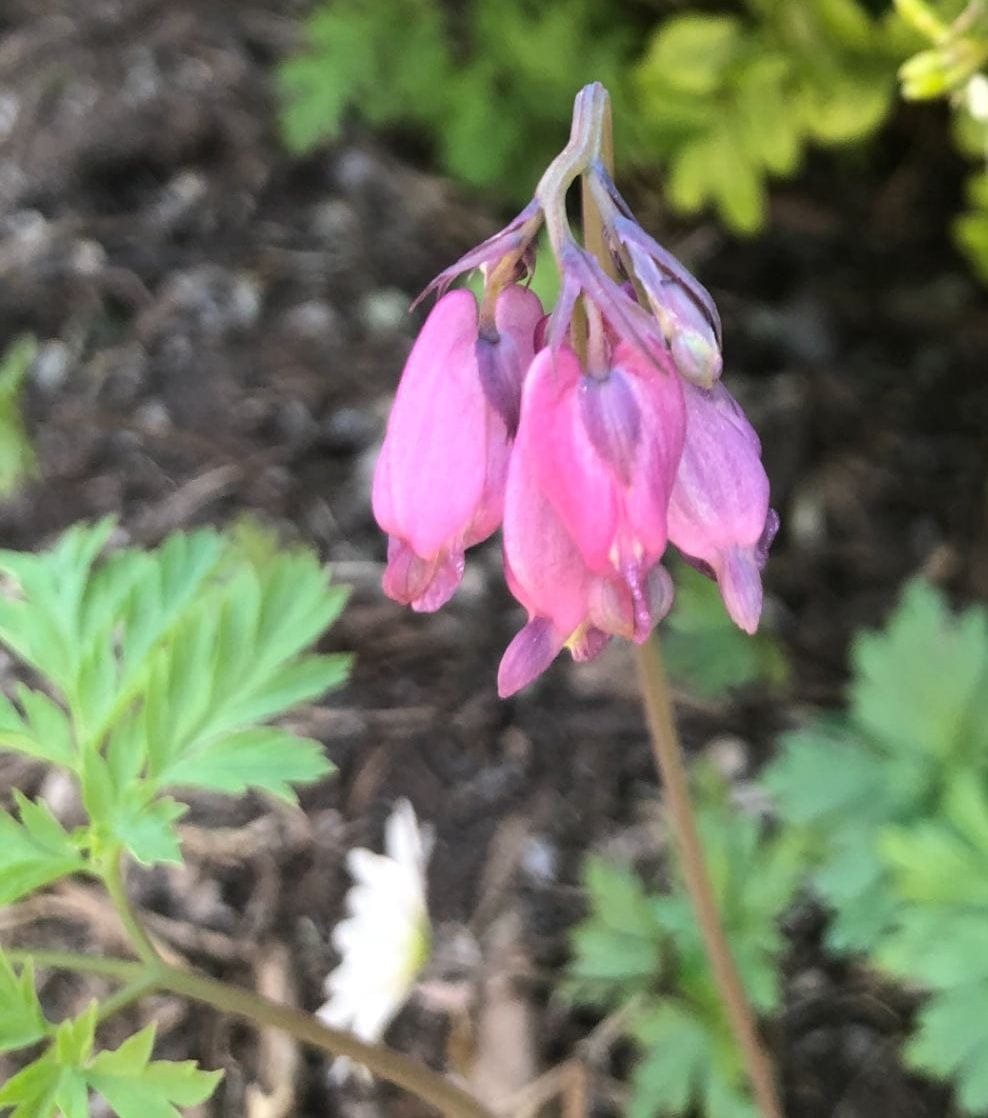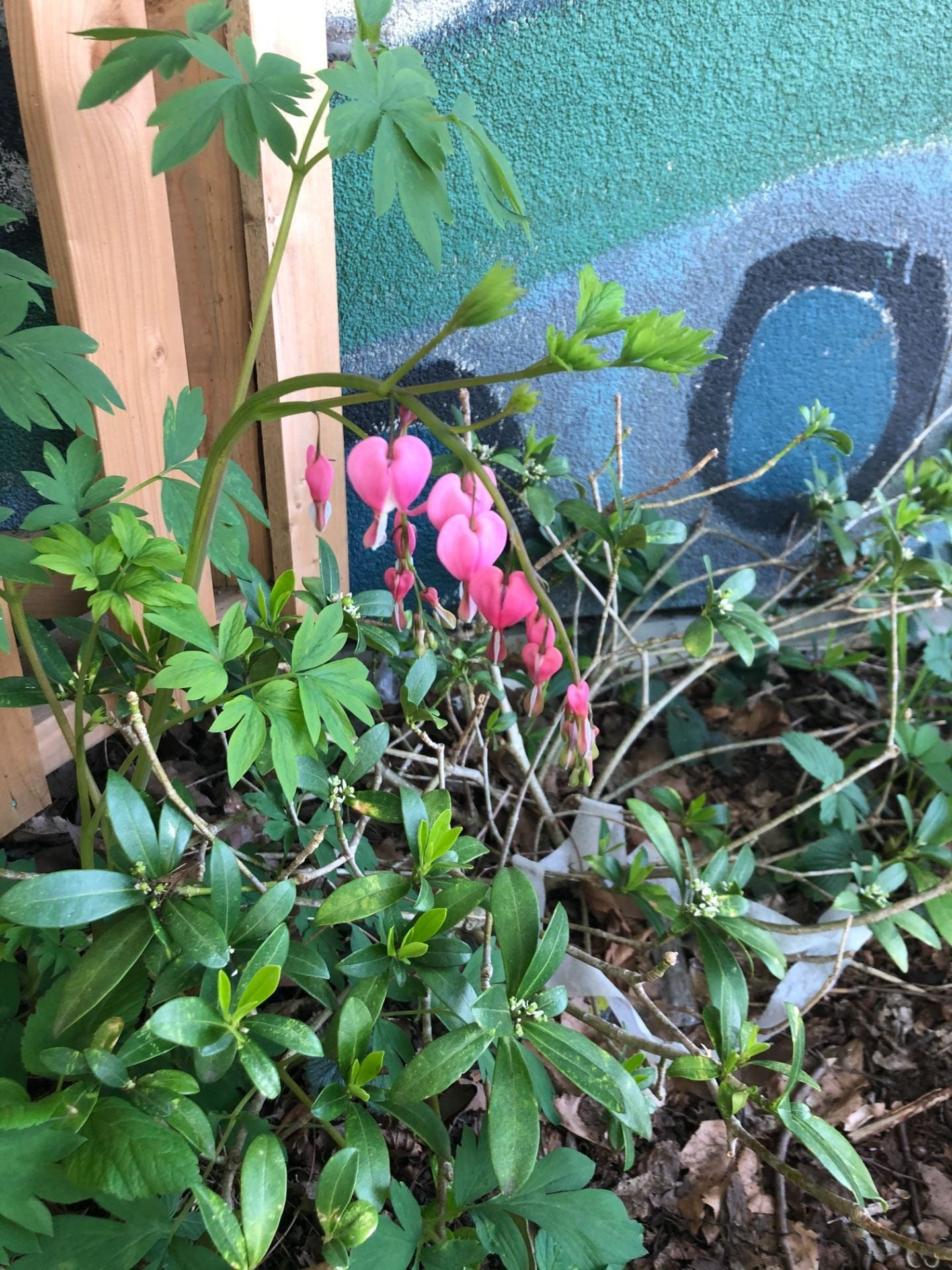Pacific Bleeding Heart
All photos taken by the author. Last updated April 23, 2021.

Bleeding heart flowers are really interesting to observe. Their petals are “deeply saccate” (like a sac), much different from the petals of a dandelion flower or cherry blossom tree, those having two dimensional petals. If you brush bleeding heart flower clusters lightly with your hand they knock satisfyingly back as they gently resist moving. As a child, I remember we would tear off the purple bleeding heart petals revealing a “naked lady” inside. I found this blog with an interesting bleeding heart interactive story. Please don’t pick the wild flowers, go instead for a few of the cultivated varieties (see my pics below) if you wish to play with bleeding heart flowers! Showy wildflowers like these are pollinator food and should be left where they are.








When flowers are visible, you are unlikely to confuse other plants with Pacific bleeding heart. The cultivated varieties come in different colours and tend to be much larger (see photos above), while the other two native Dicentra species (D. formosa spp. oregona and D. uniflora) look much different and are much rarer. Pink corydalis (Corydalis sempervirens), which belongs to the same family as Pacific bleeding heart (Papaveraceae, or Poppy family) would be the most similar in appearance but flowers later in the season.
For more information about Pacific bleeding heart please see Washington Native Plant Profile and Sierra Club BC.
So head outside this week, and for the next few weeks, and find some beautiful patches of Pacific bleeding heart in forests and roadsides. Look in peoples’ yards for the cultivated varieties, which tend to bloom for much longer periods.
BOOKS I READ:
“Dicentra species.” Gardening with Native Plants of the Pacific Northwest Third Edition, by Arthur R. Kruckeberg and Linda Chalker-Scott, Greystone Books, 2019, pp. 214-215.